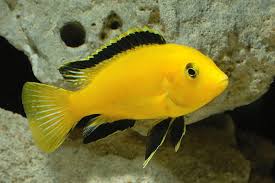Description
The Frontosa 6 Bar “Burundi” Cichlid originates from Lake Tanganyika in Africa and is widely distributed in its natural habitat. They inhabit the majority of Lake Tanganyika, mostly favouring depths ranging from 10 to 50 metres, which can be considered relatively deep within the water. Contrary to other cichlid fish that favour habitats with covers and rocks, the frontosa species exhibits a preference for large colonies along the sandy beaches of the lake.The body of the Frontosa Burundi Cichlid is characterised by a pale blue coloration adorned with five distinct vertical black bands. Notably, the sixth band extends from the forehead, traverses the eye of the fish, and terminates at the insertion point of the opercle. Consequently, they are frequently referred to as a 6 Bar Frontosa. The Frontosa Burundi Cichlid is a piscivorous species, but, it can be nourished with dry food when kept in a tank. The largest length that these cichlids can attain is 30cm.
Gender Disparity
As a fish ages, its colouring becomes deeper and its fins grow longer. The fully developed male frontosa fish possess dorsal and pectoral fins that are equipped with appendages resembling stingers at their tips. The length of the female fins is comparatively small.
Temperament and Suitable Tank Companions
Due to their semi-aggressive and territorial nature, it is advisable to house them only in an aquarium with only their own species. However, it is possible to coexist African cichlids with similar behavioural traits. Malawi Peacocks and Tanganyikan cichlids are both types of fish that develop to a larger size. Medium-sized African cichlids, such as lemon cichlids or julidochromis, are commonly found in the African region.
- Temp: 26°c – 27°c
- PH: 8-8.5
- Size: 30cm




